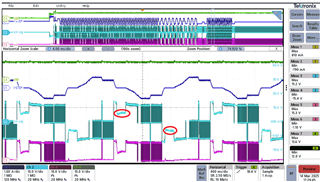Tool/software:
Hi team,
My customer Valeo asked that Aout/Bout of the DRV8889 is driven by H bridge so the output voltage( A1-A2) should be either close to +/-VM(high side mos+another low side ON) or close to gnd(both low side mos ON).
But they find in the test that when output current close to 0, The output voltage is 6V. How to understand this phenomenon? Is there any risk? VM is about 12.5V in their project.

Best Regards,
Xiaowei Zhang

